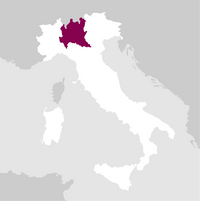Details

Perfume

Color
Serve at:
14 -16 °C.
Longevity:
05 - 10 years
Decanting time:
1 hour

Pairings
Meat
Cheese
Pork
Producer
Monsupello
From this winery
- Start up year: 1893
- Oenologist: Stefano Torre, Federico Fermini
- Bottles produced: 320.000
- Hectares: 50
Once upon a time, and it's still here. It's 1893 when the Boatti Family in the municipality of Oliva Gessi, in the heart of the Oltrepò Pavese, writes the most beautiful and important page in the history of Italian sparkling wine: at Cà del Tava, one of the great crus of the winery, the seal between Monsupello, Pinot Nero, and Chardonnay is stamped.
Daring what is new, dreaming it, imagining it, and making it real: in the name of the father, Carlo Boatti, and today with his children Pierangelo and Laura. With different sensitivities and attitudes, they are interpreters of future horizons, in the contemporaneity of their sparkling wines. Read more
Daring what is new, dreaming it, imagining it, and making it real: in the name of the father, Carlo Boatti, and today with his children Pierangelo and Laura. With different sensitivities and attitudes, they are interpreters of future horizons, in the contemporaneity of their sparkling wines. Read more


| Name | Monsupello Pinot Nero Junior 2024 |
|---|---|
| Type | Red still |
| Denomination | Provincia di Pavia IGT |
| Vintage | 2024 |
| Size | 0,75 l |
| Alcohol content | 13.5% by volume |
| Grape varieties | 100% Pinot Nero |
| Country | Italy |
| Region | Lombardy |
| Vendor | Monsupello |
| Origin | First hillside area in the municipalities of Torricella Verzate and Oliva Gessi |
| Climate | Exposure: South-West. |
| Soil composition | Clayey-limestone. |
| Cultivation system | Guyot |
| Plants per hectare | 5000 |
| Yield per hectare | 70 q. |
| Harvest | Mid-September. |
| Production technique | Dry pruning in the Guyot method is carried out starting from late November, maintaining a number of 7-8 buds per vine. From May, with shoot thinning and suckering, superfluous shoots are removed and the main ones are tied; these are fundamental operations to maintain a good vegetative and productive balance of the plant, especially in the case of young vineyards. At the beginning and end of August, after veraison, two cluster thinning operations are carried out to distribute the vine's production better among the closest shoots to the vine and to prevent cluster congestion (the main cause of gray mold attack in humid years); cluster thinning, which promotes better grape ripening, allows for a higher concentration of sugar and phenolic substances and better product health. For over 15 years, cover cropping has been practiced in the vineyards to create a more balanced canopy-root ratio of the vine and to preserve beneficial insects in the vineyard; for the same reason, low-impact pesticides are used and the use of chemical herbicides is avoided. Grape harvest is manual, in 18 kg crates. |
| Wine making | Vinification begins with destemming, to move, after a one-week period of cold pre-maceration, to alcoholic fermentation that will last about 12 days. |
| Aging | At racking, the flower wine is extracted, which, after three racking, will be put to refine and finish malolactic fermentation in steel tanks. It will then be bottled after light stabilization and microfiltration. |
| Total acidity | 5.8 gr/L |
| PH | 3.58 |
| Residual sugar | 5.0 gr/L |
| Dry extract | 26.0 gr/L |
| Allergens | Contains sulphites |




